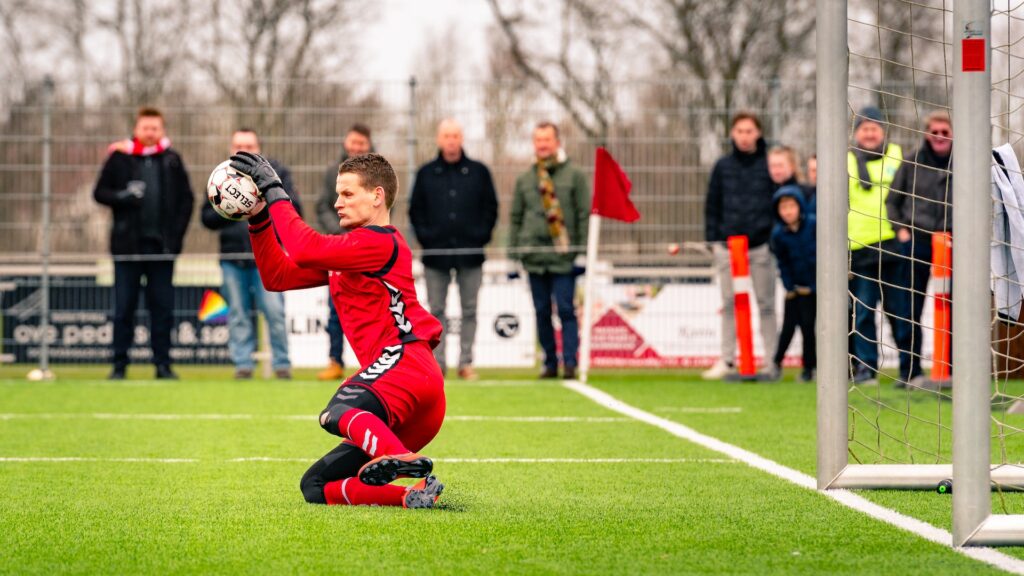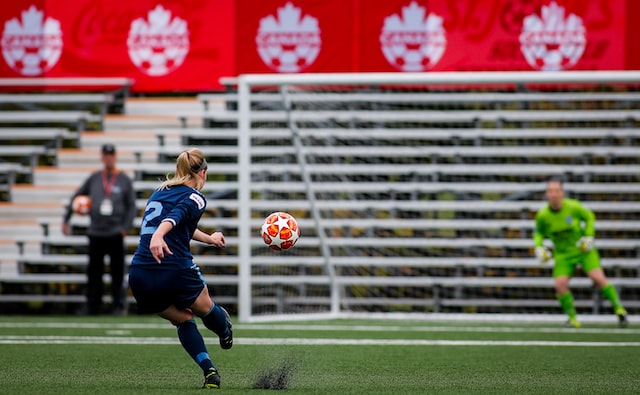Soccer is a game of fine margins, but the aim of the game is simple – to score more goals than the opposition.
With that in mind, what exactly are shots on goal in soccer, and why do you need to know about them? Let’s investigate.
So, what is a shot on goal in soccer?
In soccer, a shot on goal is one that a player kicks towards the goal, and it is saved by the goalkeeper or enters the net. It is sometimes referred to as a shot on target and is essentially a goalscoring opportunity.
If the ball misses the target or hits the woodwork, it is not classified as a shot on goal and is documented as a shot off target or simply as total shots.
It’s important to ascertain the differences between shots on goal and other attempts, as they are a key metric used to determine how effective a team’s attacking play has been, as we explain below.
Why do shots on goal matter?
In soccer, the only statistic that really matters is the final score – in other words, how many goals each team scores. But in the broader scheme of things, soccer is a game of statistics that coaches can use to analyze their team’s performance.
Shots on goal highlight how successful a team’s attacking threat has been throughout a match. For instance, if you end the game with a 3-0 defeat and zero shots on goal, it shows that you have been outplayed and well beaten by the opposition.
However, if you narrowly lost a game 2-1 and registered ten shots on goal, it shows that you actually played well and might even have deserved to win. Instead of working on your entire approach, it might encourage the coach to work on shooting drills before the next match.
So, shots on goal are important because they serve as a helpful metric for coaches and fans to refer to when analyzing their team’s performance, even if the result didn’t go to plan.
What is a shot on target?

In soccer, a shot on target is the same thing as a shot on goal. The term “target” is widely used in soccer to refer to the goalposts and has been used in the game for a long time. So, if you hear a commentator refer to the target, you can deduce that they mean the goals themselves.
Therefore, if a shot is on target, it means that the goalkeeper has been forced into making a save, or it has flown past the keeper and into the net.
If a shot is off target, on the other hand, it has flown past the goal and out of play. At the end of the match, the number of shots on and off target are tallied, and they provide players, coaches, and fans with a clear picture of how the game progressed.
Does hitting the woodwork count as a shot on target?
Even though the posts and bar are part of the target (or the goalposts), shots that hit the woodwork are actually noted as off-target and not on-target strikes. So, a shot that hits the bar or post is not regarded as a shot on goal.
While this might seem strange, you have to think about it logically. If the ball strikes the post or bar and heads out of play, it has not worked the goalkeeper or gone into the net. Therefore, it has not hit its intended target.
So, if you’re watching or playing a soccer game and you witness a player rattle the woodwork, don’t be surprised when the shot is noted as being off target!
Interested to learn about why soccer posts are referred to as the woodwork? Check out our recent article explaining the history of the woodwork in soccer and where the term comes from.
Does a penalty kick count as a shot on goal?
This really depends on the outcome of the penalty kick. If the taker steps up and scores, or if the goalkeeper saves the penalty, it will be noted as a shot on target.
But given that penalty kicks can also miss the target, they’re not always regarded as shots on target. You can even pass a penalty kick if you really want to, so it depends on the outcome!
If a match ends in a tie and goes to a penalty shootout to decide on a winner, the penalties that are taken within the shootout are not included in the final shots on goal tally given at the end of the match.
This is because the penalty shootout technically takes place after the match has finished, meaning that the penalty kicks do not count toward the number of shots taken within the match.
Does an offside goal count as a shot on goal in soccer?
As soon as offside is signaled in soccer, the referee stops the game. Therefore, anything that happens after the offside incident does not count toward the final score, including goals that are scored due to someone being in an offside position.
Therefore, if a player runs through on goal and scores only for the goal to be disallowed, the shot will not be considered as a shot on goal, and it will essentially be canceled from the game.
The same is true if the goalkeeper makes a save and the shot is still not counted as a shot on goal, as it technically happens after the game has already been stopped by the referee.
Do blocked shots count as shots on goal?
According to soccer statisticians Opta (Stats Perform), blocked shots do not count as shots on goal unless they are blocked by the goalkeeper. When you think about it, there are so many blocks made in a standard soccer game, so it would be difficult to keep track of the stats if you included them as shots on goal.
Also, it’s very difficult to say definitively whether a shot from distance is destined for the target or not, which is another reason that block shots don’t count as shots on goal.
To help keep things simple, the only shots that are regarded as shots on goal in soccer are those that go into the net and those that are saved by the goalkeeper. All other shots are regarded as off-target strikes.
Recap: Shots on goal in soccer
As is the case with all sports, there are a number of statistics and permeations within soccer that contribute to the overall outcome of a match. One such metric is shots on goal, which are classed as those that are on target.
As explained throughout, it’s important to recognize what is and what is not considered to be a shot on goal in soccer, so you don’t get confused when you’re watching or playing the beautiful game!

